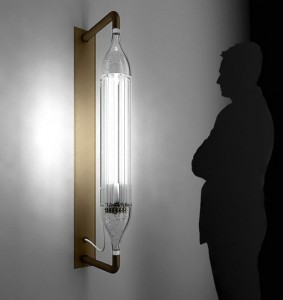
A new lighting concept intended for domestic application, use an untapped (no pun intended) energy reserve located in every modern home. Applying basic hydroelectricity principles the system creates energy with the help of micro turbines placed in already existing plumbing. The turbines will move every time water gushes through the pipes and harvest energy that otherwise literary just goes down the drain.
This system uses a low cost method of generating renewable energy, and shows that there is still a lot of things we can do to stop the energy waste in our every day lives. Well known principles and existing systems can often be used, adapted and applied in a different way. And even though some ideas might seem simple at first, the results can be pure genius.
The lighting concept is designed by Hierve, a company based in Mexico City, Mexico. It uses a glass molding that links the water pipes running through an average house. Every time water moves in the pipes, turbines get activated, which then converts the motion into electrical current. This means that each time someone turns on the water to shower, wash dishes, or flush the toilet, the flow of water gets converts into electrical current that is then stored in a battery for later use.
We understand our buildings as living entities, with energy fields running through their veins, in the form of water pipes, dreinage pipes and electric systems running through walls and ceilings.
This project takes advantage of such energy fields, which are normally neglected, and uses them in order to produce new energy that can somehow enhance the living experience of it´s inhabitants. – Hierve, webpage.
The system allows households to become more independent in their energy needs, and also lower their monthly costs. At the same they’re potentially helping the environment by minimizing the need for energy produced in less suitable way. Possibly the best part is that no extra resources will be required to generate the hydroelectricity once the system has been fitted. The only additional cost would be future maintenance and possible upgrades, something plumbing in a house will cost it’s residents eventually anyway.

